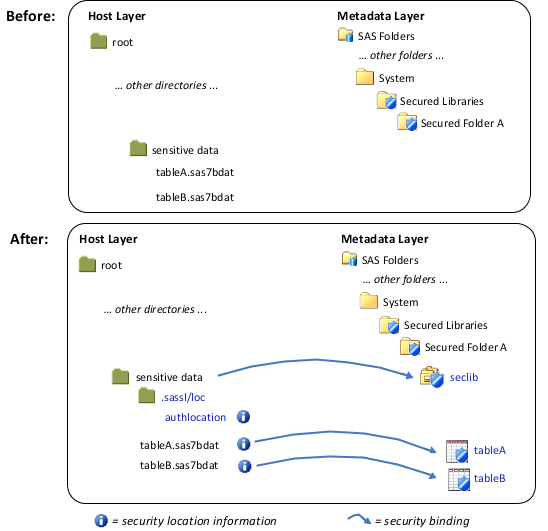Depiction of a Metadata-Bound Library
The following figure
depicts the metadata objects and physical security information that
are generated when you bind a physical library to metadata. The "Before"
section shows the initial state and the "After" section shows the
security location information, bindings, and metadata objects that
are generated by the CREATE statement of the AUTHLIB procedure.
Here are some key points
about the "After" section of the preceding figure:
-
-
For a physical library, the security information consists of a subdirectory and file. The corresponding metadata object is called a secured library object. In the figure, seclib is the secured library object that corresponds to the physical metadata-bound library called sensitive data.Note: On
z/OS , the security information for a UNIX file system (UFS) library is stored as described in the preceding figure. However, the security information for az/OS direct-access bound library is instead stored within the bound library data set itself. For this reason,z/OS sites that choose to use metadata-bound libraries might prefer thez/OS direct-access bound library implementation to the UFS library implementation.z/OS sequential-access bound libraries cannot be bound to metadata. -
For a physical table, the security information consists of information in the header. The corresponding metadata object is called a secured table object. In the figure, tableA and tableB are secured table objects that correspond to the physical metadata-bound tables tableA.sas7bdat and tableB.sas7bdat.
-
Note: The figure assumes that the
physical data is initially unprotected. If one of the physical tables
already had a different password, the presence of that password would
prevent that table from being affected by the CREATE statement. To
move from that situation to a best practice state (where, for clarity,
all tables within the security library are protected by that library’s
bindings), use the MODIFY statement of the AUTHLIB procedure.
